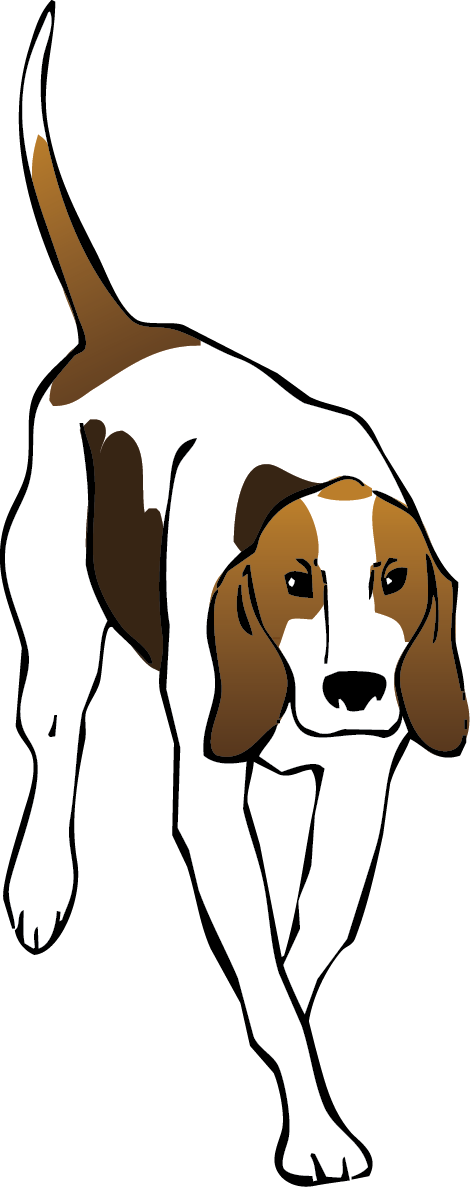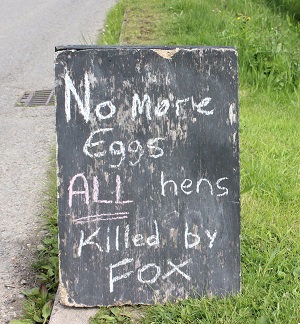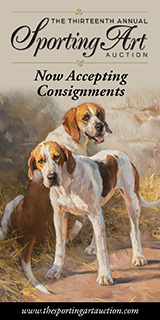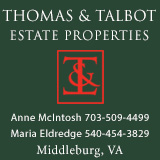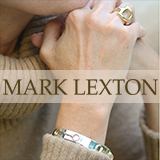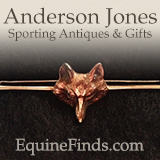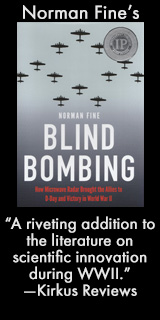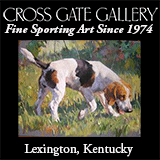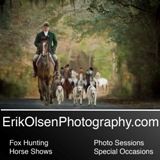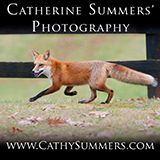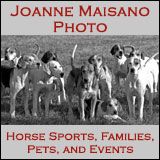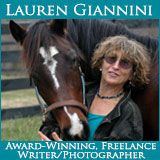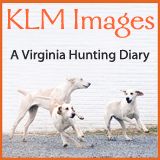hound
Close Encounters with My Vulpine Friends
James Barclay was born to foxhunting. He, his sister, two brothers, mother, father, grandfather, and great-grandfather all served as Masters of Foxhounds—a family way of life that began in 1896. James served as Master of five hunts from 1983 to 2012: the Essex and Suffolk, Fitzwilliam, Cottesmore, South Wold, and Grove and Rufford. Click for a fuller introduction to James Barclay in Norm Fine’s Blog.
With over two hundred years involvement with various packs and types of hounds under our belt, you will understand it was and always will be the number one rule in the Barclay family to have the greatest respect for our quarry species, be it the fox, deer, or hare. The pleasure they give us is immense, and this comes from not only close observation on a hunting day but during the summer months when they are all, in their own distinctive ways, equally fascinating.
It is the fox, however, that has taken up a very large part of my life, and hardly a day passes when he doesn’t enter my mind in one way or another. And more than likely he will be discussed at some point, especially when he is being blamed for eating someone’s prime poultry! Whenever foxes are talked about, however, it is generally with a large degree of affection, except of course on the day a heinous crime has been committed in his role as the ruthless killer!
My pleasure in writing this has come from looking back and remembering moments when my vulpine friends have behaved in ways that remain etched on my mind. In the past, I have recollected their somewhat strange habits after the death of a particularly well-loved character. This enters another realm, although there are places where both realms meet and it is then when it really does become all the more fascinating!
When a Fox Barks
Evie Good queried Foxhunting Life about her recent experience with a local fox.
“Can someone explain why a fox would bark repeatedly at me?” she asked. “We heard it barking last night close to the house. We found it barking at the dog this morning. When it saw me it ran to the nearby pasture, but stopped and barked some more. Finally, the fox turned and ran out of sight.
We asked two members of our Panel of Experts—Marty Wood, MFH and huntsman Hugh Robards, ex-MFH—for their opinion on this fox’s behavior.
Sporting Dog Art Exhibit Coincides with Westminster
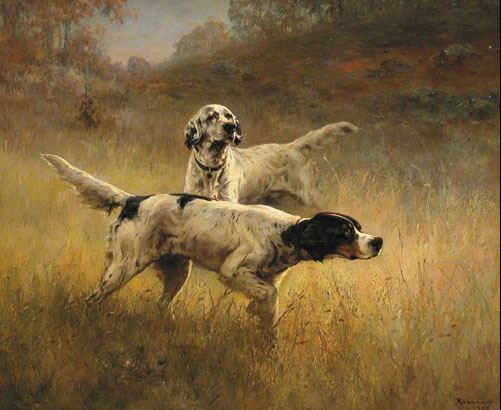
The William Secord Gallery will present an exhibit—"Canine Masters, The Nineteenth Century"—featuring works by English artists such as Maud Earl (1864–1943), Thomas Earl (fl. 1836–1885, John Emms (1843–1912), and Arthur Wardle (1864–1949), as well as as American artists such as Percival Rosseau (1859-1937) and Arthur Fitzwilliam Tait (1819-1905).
Timed to coincide with the Westminster Kennel Club’s 139th annual dog show in New York City, the Gallery will be open from 10:00 am to 6:00 pm on February 15, 16, and 17.
British-Inspired Rabbit Hunt Took an Odd Turn
California hare by John J. Audubon
The early part of the last century saw the people of Riverside, California looking towards Great Britain for inspiration for their leisure activities.
This was chiefly because of the many British immigrants who had begun arriving here about 1889, primarily to invest in, among other things, the fast-growing orange industry. English customs were held in the highest esteem, especially among socially ambitious Americans, Tom Patterson wrote in his book, A Colony for California.
Riversiders engaged in such British activities as polo, high tea, and foxhunting. The latter did not usually include a fox, because foxes were not common in the area. Instead they substituted a more common animal, the jackrabbit. These hunts were conducted wherever a large area of open land could accommodate horses, hunters, hounds, and the prey.
Hunting with King Louis XV
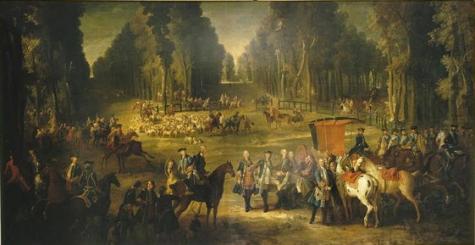 Rendez-Vous...in the Forest of Compiegne: preliminary painting for the tapestry by Jean-Baptiste Oudry at Fountainebleu
Rendez-Vous...in the Forest of Compiegne: preliminary painting for the tapestry by Jean-Baptiste Oudry at Fountainebleu
As a John H. Daniels Fellow at the National Sporting Library in Middleburg, Virginia, last fall, I did research concerning a series of nine large tapestries woven for Louis XV between 1736 and 1753 at the Gobelin manufacture. Called The Royal Hunts or The History of Louis XV, these tapestries decorated Louis XV’s favorite hunting chateau at Compiègne, just north of Paris. The artist who designed the tapestries, Jean-Baptiste Oudry* (1686-1755), was the official painter of the royal hunts who followed the hunt as part of the king’s entourage. He also painted numerous portraits of the royal hunting dogs.
Louis XV was known for his love of the hunt, and the series was meant to document the ritual of the hunt, the well-managed royal hunting grounds, and, of course, to glorify Louis XV. In the tapestries, as well as in the preliminary paintings for the tapestries now at the chateau of Fontainebleau, there are recognizable portraits of Louis XV, his hunt officers, his favorite horses and dogs, and specific sites in the royal forests of Fontainebleau and Compiègne. I was endeavoring to learn exactly what was transpiring in the images by consulting the eighteenth-century hunt treatises and manuals in the collection of the National Sporting Library.
California Bans Hunting Bear, Bobcat with Hounds
California Governor Jerry Brown signed into law a bill banning the hunting of bear and bobcat with hounds in that state. The bill was opposed throughout the legislative process by pro-hunting groups. Its enactment on Wednesday, September 26, 2012 represents a big success for the Humane Society of the United States, the animal rights organization that championed the legislation. The subtitle to Axie Navas’s article in the Tahoe Daily Tribune proclaims that some hail the new law as a step forward in promotion of humane hunting (italics mine). I suppose that those who hailed Hitler’s 1938 Munich Agreement with England as “Peace for Our Time” might agree with that assessment. The article reports that the number of black bears in California has nearly tripled in less that thirty years. Two years ago the black bear population was estimated at 25,000 to 30,000. Hunters help control the population by taking about 1,500 bears in a typical season. Hound hunting has accounted for nearly half of those taken. The law is scheduled to go into effect January 1, 2013. Posted October 6, 2012
Read More
Hound Hunting Bill Passes California Assembly
A bill that will ban the hunting of bear and bobcat with hounds (SB1221) was passed by the California State Assembly on August 22, 2012. Because it was amended in the Assembly, it must be passed again by the State Senate, after which it will go to the Governor for signature. SB1221 passed the Senate by only two votes in May as California foxhunters and other sportsmen and women made themselves heard. The next vote could come at any time, and opponents of the bill are urged to call their senators. To find your senator, go to the USSA Legislative Action Center. Hunting proponents argue that there is a healthy population of both species, and hunting with hounds is a humane way to take them cleanly with rifles when at bay. Further, it is estimated that passage of the bill will result in a fiscal impact to the state of nearly one million dollars. Sportsmen also argue that similar bills passed in other states have resulted in population increases of game to troublesome levels. Read more details in the USSA’s Sportsmen’s Daily. Posted August 23, 2012
Read More
The Part-Time Whipper-In
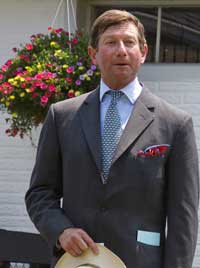
Nigel Peel, MFH
Karen L. Myers photo
Karen L. Myers photo
The Question
"I have read Lt. Col. Foster’s book Whipper-In which states the basic premise that whips must know the names of each hound to truly be of assistance," writes Kathy Rubin. "What contribution can I make as an honorary whip when I cannot devote the time to know each hound? Where should I set my sights so I can be of help to my huntsman despite the fact that I cannot be with hounds on a daily basis? I believe many of the smaller hunts in the country face the same problem. Can you give me some guidance and recommend additional reading?"
Knowing that Messrs. Scott, Robards, and Peel—world authorities on the subjects of foxhounds and the hunting of hounds in the field—are geared to thinking at the most sophisticated levels of hound management, I had to wonder, as I posed Kathy’s question to them, if they could truly identify with her less than ideal aspirations. They did. But at the same time, they didn’t let her completely off the hook.
